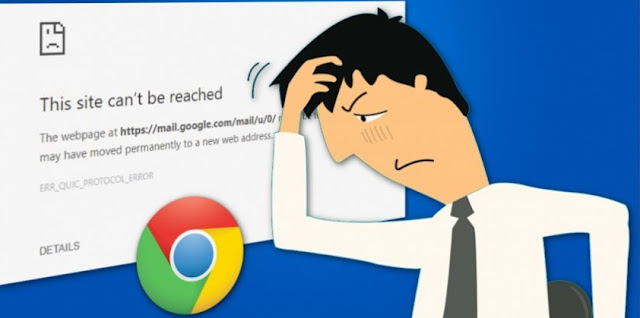Tips to fix ERR QUIC PROTOCOL ERROR in Google Chrome
If you fail to open any website and instead of being able to see
the page opening you receive “ERR QUIC PROTOCOL ERROR message” in Google
Chrome, here are few things you can try as a solution to troubleshoot this
error.
ERR_QUIC_PROTOCOL_ERROR
You may have
received this error message possibly when attempting to access particular web
pages that are integrated with Google such as YouTube or Gmail. However, some
of the other websites can also be targeted sometime. You see this message
usually when the URL is down. If you know that the site is not down but still
see the same note, you may need to fix further.
Fixing ERR_QUIC_PROTOCOL_ERROR
#1 Disable QUIC Protocol
As said by
Wikipedia, QUIC is an experimental transport layer network protocol available
in Google Chrome for establishing a connection between two endpoints over UDP.
If something is wrong with the development side, you are more likely to get
this error message while opening any website in Google Chrome. Thus, you can
try disabling this experimental protocol in your browser and then check whether
the issue remains or not.
- Open the Google Chrome and enter
this in the address bar:
·
chrome://flags/
- After that, you need to search
for Experimental QUIC protocol.
- Doing so will now set it to
Default.
- You have to expand the drop-down
menu and then select Disable/Turn off.
- Now, simply restart the browser
and see if it works for you.
#2 Turn VPN/Proxy off when logging into your ISP’s account
Some of the ISPs are
there, by which a particular method is used to differentiate user accounts. For
security reasons, they contain a login prompt before the user can actually
start using the internet.
In such case, as
mentioned, a username and password are mandatory to log into your ISP provided
user account.
If you have both
username and password, you need to login first.
A straightforward
workaround would be to turn off your VPN or Proxy while you log in to your user
account.
When using an ISP
for the first time and not having any username or password, asking your ISP if
they have such a protocol for you or not will help you.
All the best!
Emma Justine is a
Microsoft Office expert and has been working in the technical industry since
2002. As a technical expert, Emma has written technical blogs,
manuals, white papers, and reviews for many websites such as office.com/setup.




Comments
Post a Comment